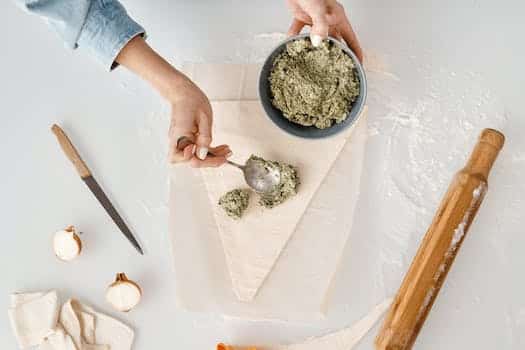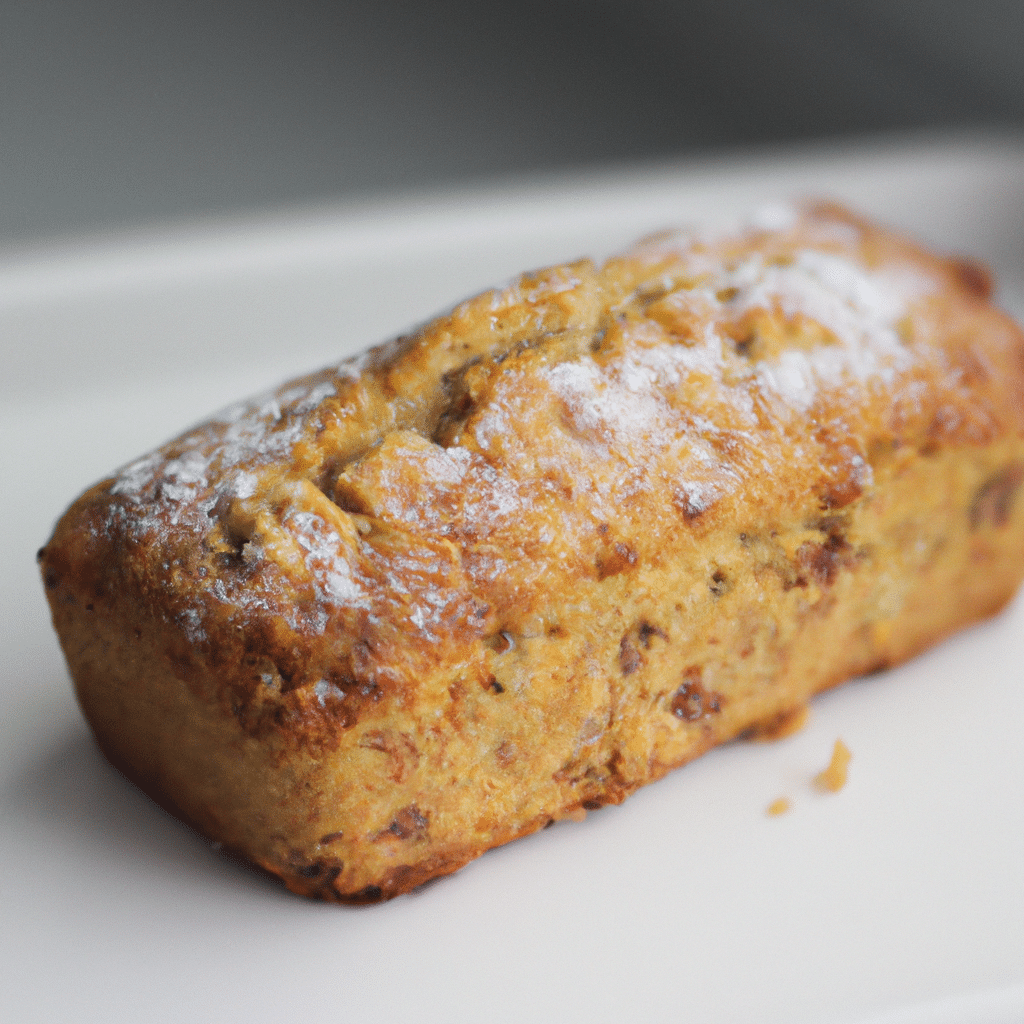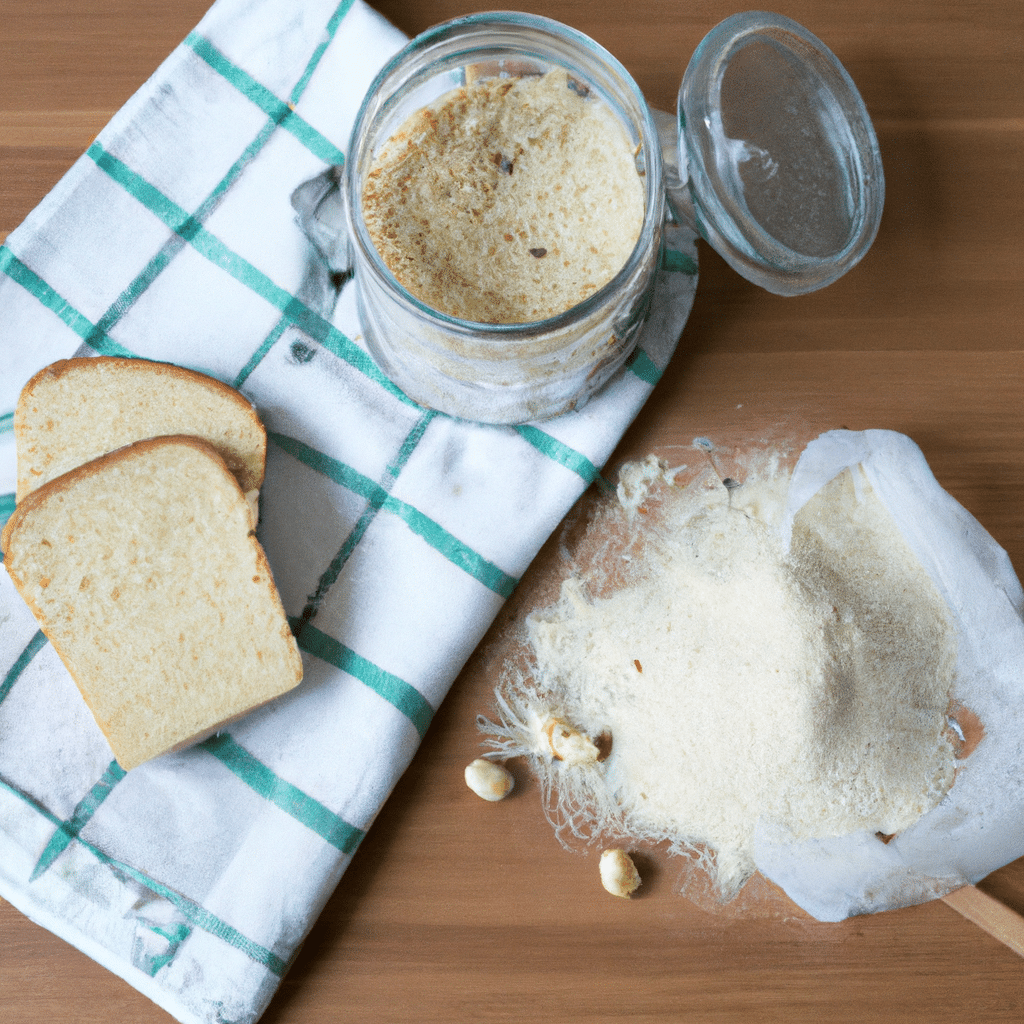Gluten-free baking can be quite challenging for many reasons. With the absence of gluten, a protein found in wheat and other grains, achieving the desired texture and structure in baked goods becomes an intricate task. Gluten plays a crucial role in providing elasticity and structure to dough, making it difficult to replicate in gluten-free recipes. Additionally, gluten-free flours and ingredients often behave differently, requiring precise measurements and careful adjustments. In this article, we will explore the various challenges faced in gluten-free baking and provide insights into mastering this art.
- 1. Challenges in Gluten Free Baking
- 1.1. Limited Flour Options
- 1.2. Texture and Structure Issues
- 1.3. Ingredient Substitutions
- 1.4. Cross-Contamination Risks
- 1.5. Complexity of Recipes
- 2. Tips for Successful Gluten Free Baking
- 2.1. Understanding Gluten-Free Flours
- 2.2. Using Binders and Stabilizers
- 2.3. Balancing Wet and Dry Ingredients
- 2.4. Adding Extra Flavor and Moisture
- 2.5. Experimenting and Adapting Recipes
- 3. Overcoming Gluten Free Baking Challenges
1. Challenges in Gluten Free Baking
Gluten free baking presents several challenges that can make it a difficult task. The absence of gluten, a protein found in wheat and other grains, affects the texture, structure, and taste of baked goods. Gluten provides elasticity and helps trap air bubbles, resulting in the light and fluffy texture commonly associated with traditional baked goods. Without gluten, it becomes challenging to achieve the same level of lightness and rise in gluten free baked goods.
Additionally, gluten acts as a binding agent, holding ingredients together and providing stability. Its absence can lead to crumbly and dry baked goods. Gluten also contributes to the browning and crispness of the crust, which can be hard to replicate in gluten free baking.
Furthermore, gluten free flours often have different textures and absorbency levels compared to traditional wheat flour. Finding the right combination of gluten free flours and other ingredients to achieve the desired texture and taste can be a trial-and-error process.
Cross-contamination is another challenge in gluten free baking. Even a small amount of gluten can trigger adverse reactions in individuals with gluten intolerance or celiac disease. Thus, it is crucial to ensure that all equipment, utensils, and ingredients used in gluten free baking are thoroughly cleaned and free from gluten traces.
In conclusion, gluten free baking is challenging due to the absence of gluten, which affects the texture, structure, and taste of baked goods. Overcoming these challenges requires experimentation, knowledge of alternative ingredients, and strict adherence to preventing cross-contamination.
1.1. Limited Flour Options
When it comes to gluten-free baking, one of the major challenges is the limited flour options available. Gluten, a protein found in wheat, barley, and rye, provides the structure and elasticity necessary for traditional baking. However, individuals with gluten sensitivities or celiac disease cannot tolerate gluten, making it essential to find suitable alternatives.
Unfortunately, many gluten-free flours lack the same properties as wheat flour, leading to difficulties in achieving the desired texture and taste in baked goods. Some commonly used gluten-free flours include rice flour, almond flour, coconut flour, and tapioca flour. Each of these flours has its unique characteristics, which can affect the final outcome of the baked product.
For example, rice flour is a popular choice due to its mild flavor and versatility. However, it is often criticized for its gritty texture and lack of elasticity, resulting in crumbly or dry baked goods. Almond flour, on the other hand, provides a moist and nutty flavor but can be dense and heavy when used as the sole flour.
Coconut flour, known for its high fiber content, absorbs a significant amount of liquid, requiring adjustments in recipes to maintain the right consistency. Tapioca flour, derived from the cassava root, helps improve the chewiness and structure of gluten-free baked goods but can also lead to a gummy texture if not used correctly.
To overcome these challenges, many gluten-free bakers resort to using a blend of different flours and additional ingredients such as xanthan gum or guar gum. These additives help mimic the elasticity and binding properties of gluten, enhancing the overall texture of the baked goods. Experimentation and fine-tuning of recipes based on personal preferences and dietary needs are often necessary to achieve the desired results.
In conclusion, the limited flour options for gluten-free baking present a significant challenge to bakers. Understanding the characteristics of different gluten-free flours and their potential drawbacks is crucial in creating delicious and successful gluten-free baked goods.
1.2. Texture and Structure Issues
One of the major challenges in gluten-free baking is dealing with texture and structure issues. Gluten, a protein found in wheat, barley, and rye, is responsible for the elasticity and structure in baked goods. When gluten is removed from the equation, it becomes difficult to achieve the same texture and structure in gluten-free baked goods.
Gluten provides the necessary binding and elasticity that allows dough to rise and gives it a chewy texture. Without gluten, gluten-free baked goods often turn out dense, crumbly, or dry. The absence of gluten makes it challenging to create a light and airy texture in bread, cakes, and pastries.
To overcome these texture and structure issues, gluten-free bakers have to rely on alternative ingredients and techniques. They often use a combination of gluten-free flours such as rice flour, almond flour, or tapioca flour to mimic the texture of wheat flour. Adding xanthan gum or guar gum can also help provide the necessary binding and elasticity that gluten would normally offer.
Experimentation and trial-and-error are essential in gluten-free baking to find the right balance of ingredients and techniques. It requires careful measurements, precise mixing, and understanding the science behind gluten-free baking. Even with experience, achieving the perfect texture and structure in gluten-free baked goods can still be a challenge.
In conclusion, texture and structure issues pose significant challenges in gluten-free baking. Without gluten, bakers need to find alternative ways to create the desired texture and structure in their baked goods. It requires knowledge, skill, and experimentation to overcome these challenges and produce delicious gluten-free treats.
1.3. Ingredient Substitutions
Gluten free baking can be a challenging task, especially for those who are new to it. One of the main difficulties in gluten free baking is finding suitable ingredient substitutions. When traditional baking recipes call for ingredients like wheat flour, which contains gluten, it becomes necessary to find alternative options that will produce similar results. Fortunately, there are several ingredient substitutions available for gluten free baking.
One common substitution for wheat flour is a gluten free flour blend. These blends are typically made from a combination of alternative flours, such as rice flour, almond flour, and tapioca flour. They are designed to mimic the texture and taste of traditional wheat flour, making them a great option for gluten free baking.
Another common substitution is using nut flours, such as almond or coconut flour. These flours are naturally gluten free and can provide a unique flavor and texture to baked goods. However, it is important to note that nut flours may require additional moisture or binding agents to achieve the desired consistency.
In some cases, gluten free baking may require the use of a combination of different ingredients to achieve the desired results. For example, xanthan gum or guar gum can be added to gluten free flour blends to improve the texture and binding properties. Eggs or egg substitutes can also be used as binding agents in place of gluten.
Despite the challenges in gluten free baking, with the right ingredient substitutions and techniques, it is possible to create delicious and satisfying gluten free baked goods. Experimenting with different ingredients and recipes can help individuals overcome the obstacles and enjoy the benefits of gluten free baking.
1.4. Cross-Contamination Risks
Cross-contamination is a significant risk for individuals who follow a gluten-free diet. Even the smallest trace of gluten can cause adverse reactions in people with gluten sensitivity or celiac disease. Cross-contamination occurs when gluten-containing ingredients or products come into contact with gluten-free foods, utensils, or surfaces.
One of the main challenges in gluten-free baking is avoiding cross-contamination. Gluten is commonly found in wheat, barley, and rye, which are widely used in traditional baking. This means that gluten can easily find its way into gluten-free baking environments, making it difficult for individuals with gluten sensitivities to find truly safe options.
To minimize cross-contamination risks, it’s crucial to have a dedicated gluten-free baking area or kitchen. Using separate equipment, utensils, and storage containers specifically designated for gluten-free ingredients can help prevent accidental exposure to gluten. Additionally, thorough cleaning and sanitization practices should be followed to ensure that no traces of gluten remain on surfaces or equipment.
Another challenge lies in sourcing gluten-free ingredients that are safe and reliable. While there are now more gluten-free options available in the market, not all of them are suitable for baking. Gluten-free flours and other ingredients often have different properties and require adjustments in recipes to achieve the desired texture and taste.
Moreover, gluten-free baking often involves experimenting with different combinations of flours, starches, and binders to create a suitable substitute for gluten. Achieving the right balance of ingredients can be tricky, as the absence of gluten affects the structure, elasticity, and rise of baked goods.
In conclusion, cross-contamination poses a significant risk in gluten-free baking, making it challenging for individuals who need to strictly avoid gluten. The need for dedicated gluten-free environments and careful ingredient selection adds to the complexity of gluten-free baking. Despite these challenges, with proper knowledge, techniques, and experimentation, it is possible to overcome the difficulties and enjoy delicious gluten-free baked goods.
1.5. Complexity of Recipes
Gluten free baking poses numerous challenges due to the complexity of recipes. Unlike regular baking, gluten free recipes require alternative ingredients and techniques to achieve similar results. The absence of gluten, a protein found in wheat, rye, and barley, affects the texture, structure, and taste of baked goods. As a result, gluten free bakers need to experiment with various flours, binders, and leavening agents to overcome these challenges and produce satisfactory results. Additionally, the absence of gluten makes it difficult to achieve the desired rise and elasticity in bread and dough, often resulting in dense and crumbly textures. While gluten free baking can be challenging, with practice and the right knowledge, it is possible to create delicious and satisfying gluten free baked goods.
2. Tips for Successful Gluten Free Baking
Gluten-free baking can be a challenging task, but with the right tips and techniques, you can achieve successful results. Here are some helpful tips for mastering the art of gluten-free baking:
1. Use a combination of gluten-free flours: Instead of relying on a single type of gluten-free flour, blend different flours to create a more balanced and flavorful result. Popular gluten-free flours include rice flour, almond flour, and tapioca flour.
2. Incorporate binders and gums: Gluten is responsible for providing structure and elasticity to baked goods. To mimic this effect, add binders like xanthan gum or guar gum to your gluten-free recipes. These binders help improve texture and prevent crumbliness.
3. Don’t overmix the batter: Unlike traditional baking, gluten-free batters should not be overmixed. Overmixing can lead to a dense and gummy texture. Mix the ingredients until just combined to achieve a lighter and fluffier result.
4. Increase the leavening agents: Gluten-free flours tend to be heavier than wheat flour, so it’s essential to increase the amount of leavening agents, such as baking powder or baking soda. This helps the dough rise and gives the baked goods a softer texture.
5. Add moisture to prevent dryness: Gluten-free baked goods often have a tendency to become dry. To combat this, add extra moisture to your recipes. This can be achieved by using ingredients like applesauce, yogurt, or additional eggs.
6. Experiment and adapt: Gluten-free baking is all about experimentation. Don’t be afraid to try new recipes and make adjustments along the way. Finding the perfect combination of ingredients and techniques may require some trial and error, but it will be worth it in the end.
By following these tips, you can overcome the challenges of gluten-free baking and create delicious treats that are just as satisfying as their gluten-filled counterparts.
2.1. Understanding Gluten-Free Flours
Understanding Gluten-Free Flours
When it comes to gluten-free baking, it is essential to have a good understanding of the different types of gluten-free flours available. Gluten-free flours are made from various grains, nuts, seeds, and legumes, which do not contain gluten protein. These flours provide alternative options for individuals with gluten intolerance or those following a gluten-free diet.
Here are some common gluten-free flours used in baking:
1. Rice Flour: Rice flour is a versatile gluten-free flour that can be used in a variety of baked goods. It has a light texture and mild flavor, making it suitable for cakes, cookies, and bread.
2. Almond Flour: Made from ground almonds, almond flour adds a nutty flavor and moist texture to gluten-free recipes. It is commonly used in cookies, muffins, and cakes.
3. Coconut Flour: Coconut flour is a high-fiber, gluten-free flour made from dried coconut meat. It has a unique texture and imparts a subtle coconut flavor. It is often used in pancakes, waffles, and bread.
4. Buckwheat Flour: Despite its name, buckwheat is not related to wheat and is naturally gluten-free. Buckwheat flour is commonly used in pancakes, crepes, and soba noodles.
5. Quinoa Flour: Quinoa flour is derived from ground quinoa seeds and is a great source of protein. It has a slightly nutty flavor and works well in bread, muffins, and cookies.
6. Chickpea Flour: Also known as gram flour or besan, chickpea flour is made from ground chickpeas. It has a strong flavor and is often used in savory dishes like socca, fritters, and flatbreads.
Understanding the characteristics and properties of these gluten-free flours can help you choose the right flour for your baking needs. Experimenting with different combinations and ratios can also lead to successful gluten-free baking results.
2.2. Using Binders and Stabilizers
Using Binders and Stabilizers
When it comes to gluten-free baking, using binders and stabilizers is crucial for achieving successful results. These ingredients help to replicate the structure and texture that gluten provides in traditional baking.
One common binder used in gluten-free baking is xanthan gum. It is a natural ingredient that helps to thicken and stabilize doughs and batters. Xanthan gum is particularly effective in recipes that require elasticity and binding, such as bread and cake recipes.
Another popular binder is psyllium husk powder. It acts as a thickening agent and provides moisture retention, which is essential for gluten-free baked goods. Psyllium husk powder is often used in recipes that call for a higher moisture content, such as muffins and cookies.
In addition to binders, stabilizers like agar-agar and guar gum can also be used in gluten-free baking. These ingredients help to improve the texture and stability of baked goods.
To achieve successful gluten-free baking, it is important to follow recommended measurements and usage instructions for binders and stabilizers. Experimenting with different ratios and combinations can also help in finding the perfect balance for your specific recipe.
2.3. Balancing Wet and Dry Ingredients
Balancing wet and dry ingredients is crucial for successful gluten-free baking. Unlike traditional baking, gluten-free recipes often require a different ratio of wet to dry ingredients to achieve the desired texture and taste. Here are some tips to help you achieve the perfect balance:
1. Measure accurately: Use measuring cups and spoons to ensure precise measurements of both wet and dry ingredients. Even a slight variation in measurements can significantly affect the outcome of your gluten-free baked goods.
2. Use a mix of flours: Gluten-free flours have different textures and absorb moisture differently. To achieve a balanced texture, it’s best to use a blend of gluten-free flours such as rice flour, almond flour, tapioca flour, or potato starch.
3. Adjust the liquid content: Gluten-free recipes often require more liquid than traditional recipes. This is because gluten-free flours tend to absorb more moisture. If your batter or dough seems too dry, add a bit more liquid (such as milk, water, or oil) until you achieve a smoother consistency.
4. Don’t overmix: Overmixing gluten-free batters can lead to a dense and gummy texture. Mix the ingredients until they are just combined to avoid overdeveloping the gluten-free flours.
5. Let it rest: Gluten-free batters and doughs often benefit from resting before baking. This allows the flours to fully hydrate and results in a better texture. Let the batter rest for about 15-30 minutes before baking.
By following these tips, you can enhance the success of your gluten-free baking endeavors and create delicious treats that rival their gluten-containing counterparts.
2.4. Adding Extra Flavor and Moisture
Adding Extra Flavor and Moisture:
When it comes to gluten-free baking, one of the common challenges is achieving the same level of flavor and moisture as traditional baked goods. However, there are several techniques and ingredients that can help enhance the taste and texture of gluten-free treats.
1. Incorporate fruits and vegetables: Adding pureed fruits or vegetables such as bananas, applesauce, or pumpkin puree can provide natural sweetness and moisture to gluten-free baked goods. These ingredients also add extra nutrients and fiber to your treats.
2. Use alternative flours: Experiment with a variety of gluten-free flours like almond flour, coconut flour, or buckwheat flour. Each flour has its unique taste and texture, which can add depth and richness to your baked goods.
3. Try different binders: Gluten is responsible for the elasticity and structure in traditional baked goods. To replicate this, you can use binders like xanthan gum or guar gum, which help improve the texture and prevent crumbling.
4. Incorporate flavor enhancers: Adding ingredients like vanilla extract, cocoa powder, or spices such as cinnamon or nutmeg can elevate the flavor profile of your gluten-free treats. Be generous with these flavor enhancers to make up for any potential blandness.
5. Increase moisture with fats: Gluten-free flours tend to absorb more moisture, resulting in drier baked goods. To counteract this, add slightly more fat, such as butter, oil, or yogurt, to keep the texture moist and tender.
By incorporating these tips, you can add extra flavor and moisture to your gluten-free baked goods, making them just as delicious as their gluten-containing counterparts.
2.5. Experimenting and Adapting Recipes
When it comes to gluten-free baking, experimenting and adapting recipes is key to achieving successful results. Gluten, a protein found in wheat and other grains, provides the structure and elasticity in traditional baking. Without gluten, it can be challenging to achieve the same texture and rise in baked goods. However, with some tips and tricks, you can overcome these difficulties and create delicious gluten-free treats.
One important tip for successful gluten-free baking is to start with a reliable gluten-free flour blend. There are numerous pre-made blends available in stores, but you can also create your own by combining different gluten-free flours and starches. This allows you to customize the blend to your preference and the specific recipe you are working with.
Another helpful tip is to increase the liquid content in your recipes. Gluten-free flours tend to absorb more moisture than regular flours, so adding extra liquid, such as milk or water, can help prevent dryness in your baked goods. It’s important to note that gluten-free batters and doughs are often stickier and more fluid than traditional ones, so don’t be alarmed if the consistency seems different.
Additionally, using binders and thickeners can improve the texture of your gluten-free baked goods. Ingredients like xanthan gum or guar gum can help mimic the elasticity and structure that gluten provides. These binders can usually be found in the baking aisle of most grocery stores or specialty food shops.
Lastly, don’t be afraid to experiment with different ingredients and techniques. Gluten-free baking is all about trial and error, as each recipe and flour blend may require slight adjustments. Keep notes of your experiments, noting any changes you made, so you can replicate successful outcomes in the future.
In conclusion, successful gluten-free baking requires experimentation and adaptation. By starting with a reliable flour blend, increasing the liquid content, using binders, and being open to trying new ingredients and techniques, you can overcome the challenges and create delicious gluten-free treats.
3. Overcoming Gluten Free Baking Challenges
Gluten-free baking can be a challenging task, even for experienced bakers. The absence of gluten, a protein found in wheat and other grains, creates unique hurdles that need to be overcome to achieve successful results. One of the main challenges is the lack of elasticity and structure that gluten provides. Without gluten, it becomes difficult to achieve the desired texture and rise in baked goods.
Another challenge is finding the right combination of gluten-free flours and additives to mimic the properties of wheat flour. Gluten-free flours, such as rice flour, almond flour, or tapioca flour, have different textures and flavors, which can affect the overall taste and texture of the final product. It requires experimentation and understanding of the different properties of each flour to create a blend that works well for specific recipes.
Furthermore, gluten-free baking often requires additional ingredients and techniques to enhance the taste and texture of the baked goods. Ingredients like xanthan gum or guar gum are commonly used as binders to improve the structure and prevent crumbling. Other techniques, such as adding extra moisture or using specific mixing methods, may be necessary to achieve the desired results.
Cross-contamination is another concern in gluten-free baking. Even trace amounts of gluten can cause adverse reactions in individuals with celiac disease or gluten sensitivity. It is crucial to have a dedicated gluten-free workspace, separate tools, and carefully sourced ingredients to avoid any contamination.
Despite the challenges, gluten-free baking can be a rewarding experience with the right knowledge and techniques. With practice and experimentation, it is possible to create delicious gluten-free baked goods that rival their gluten-containing counterparts.
3.1. Educating Yourself about Gluten-Free Baking
When it comes to gluten-free baking, educating yourself is crucial in overcoming the challenges that often arise. Gluten-free baking can be particularly difficult because traditional baking relies heavily on the elasticity and structure that gluten provides. Without gluten, it can be tricky to achieve the same results.
One of the first steps in educating yourself about gluten-free baking is understanding what gluten is and why it is problematic for some individuals. Gluten is a protein found in wheat, barley, and rye. It gives dough its elasticity and allows it to rise, resulting in fluffy breads and tender cakes.
For those with celiac disease or gluten sensitivity, consuming gluten can cause severe health issues. This is why gluten-free baking has become essential for many people. However, it requires a different approach and specific ingredients.
Gluten-free flours, such as almond flour, rice flour, or tapioca flour, are commonly used as substitutes. These flours lack the elasticity of gluten, so additional binders or thickeners may be necessary to achieve the desired texture.
Another challenge in gluten-free baking is achieving proper rising. Gluten helps trap the gases produced by yeast or baking soda, causing the dough to rise. Without gluten, alternative techniques and ingredients must be used to create similar results.
Understanding the science behind gluten-free baking is essential for success. This includes learning about different flours, binders, rising agents, and techniques specific to gluten-free recipes. With the right knowledge and practice, it is possible to overcome the challenges and create delicious gluten-free baked goods.
3.2. Investing in Quality Ingredients
When it comes to gluten-free baking, investing in quality ingredients is crucial. The challenges that arise when baking without gluten can be overcome by using high-quality ingredients that are specifically designed for gluten-free recipes.
One of the main challenges in gluten-free baking is achieving the right texture. Gluten is responsible for providing structure and elasticity to baked goods. Without it, the final product can turn out dense, crumbly, or dry. However, by using quality gluten-free flours and starches such as almond flour, rice flour, tapioca starch, or potato starch, it is possible to create a lighter and more tender texture.
Another challenge is maintaining moisture in gluten-free baked goods. Gluten-free flours tend to absorb more moisture than traditional wheat flour, which can lead to dryness. To overcome this challenge, it is important to use ingredients that add moisture, such as eggs, yogurt, applesauce, or additional fats like butter or oil.
Furthermore, achieving a flavorful taste can be a challenge in gluten-free baking. Wheat flour contributes its own unique taste to baked goods, and without it, the flavor can be bland. To enhance the taste, it is recommended to use ingredients like vanilla extract, spices, citrus zest, or even adding small amounts of flavorful ingredients like chocolate chips or dried fruit.
Investing in quality ingredients not only helps to overcome these challenges but also improves the overall taste and texture of gluten-free baked goods. By choosing high-quality gluten-free flours, starches, and other ingredients, bakers can create delicious and satisfying treats that are just as enjoyable as their gluten-containing counterparts.
3.3. Using Precise Measurements
Using precise measurements is essential for overcoming gluten-free baking challenges. When working with gluten-free flours and ingredients, accuracy is crucial to achieve the desired texture and taste in the final baked goods. Unlike regular baking, where slight variations in measurements may not affect the outcome significantly, gluten-free baking requires more precision.
Measuring ingredients by weight rather than volume is highly recommended for gluten-free recipes. This method provides more accurate and consistent results. Investing in a digital kitchen scale can be beneficial for gluten-free bakers as it allows for precise measurement of ingredients.
In addition to weight measurements, using specific measuring tools such as measuring spoons and cups designed for gluten-free baking can also contribute to better results. These tools are often labeled as gluten-free and help ensure accurate measurements.
Gluten-free flours have different weights and absorb liquids differently compared to traditional wheat flour. Therefore, it is important to follow the recipe instructions carefully and measure ingredients precisely to maintain the desired balance of moisture and structure in the final baked goods.
By using precise measurements, gluten-free bakers can overcome some of the challenges associated with gluten-free baking and achieve delicious and successful results.
3.4. Testing and Adjusting Recipes
Testing and adjusting recipes is essential when it comes to overcoming gluten-free baking challenges. Due to the absence of gluten, which provides structure and elasticity to baked goods, gluten-free baking can be quite challenging. However, with the right techniques and adjustments, it is possible to achieve delicious gluten-free baked goods.
When starting with a gluten-free recipe, it is important to understand that the absence of gluten affects the texture and taste of the final product. Gluten-free flours, such as almond flour, rice flour, or tapioca flour, have different properties compared to wheat flour. Therefore, it may be necessary to experiment with different flour combinations to achieve the desired texture.
In addition to flour substitutions, other ingredients may also need adjustments. For example, xanthan gum or guar gum can be added to provide the necessary binding properties that gluten would normally provide. It is important to note that the amount of gum needed may vary depending on the recipe and the desired texture.
Furthermore, it is crucial to pay attention to the liquid content of the recipe. Gluten-free flours tend to absorb more liquid than wheat flour, so it may be necessary to increase the amount of liquid in the recipe. This can help prevent dry and crumbly textures in the final product.
Temperature and baking time may also need to be adjusted when baking gluten-free. Some gluten-free recipes may require a slightly lower temperature or longer baking time to ensure even baking and prevent over-browning.
Overall, testing and adjusting recipes is a crucial step in overcoming gluten-free baking challenges. By experimenting with different flour combinations, adjusting ingredients, and paying attention to liquid content and baking techniques, it is possible to create delicious gluten-free baked goods that rival their gluten-containing counterparts.
3.5. Seeking Support and Resources
Seeking Support and Resources
Overcoming Gluten Free Baking Challenges
Conclusion
In conclusion, gluten-free baking poses unique challenges due to the absence of gluten, which plays a crucial role in providing structure and elasticity to baked goods. Achieving the same texture, taste, and rise as traditional baked goods requires careful selection and combination of alternative flours, binders, and leavening agents. Additionally, the need to avoid cross-contamination and ensure ingredient safety further adds to the complexity of gluten-free baking. Despite the challenges, with proper knowledge, experimentation, and access to high-quality gluten-free ingredients, it is possible to create delicious and satisfying gluten-free baked goods.






3 Comments
Brittni Ophelia
1 year agoAs a normal human visitor, I found the article on gluten-free baking to be quite informative and insightful. The challenges associated with gluten-free baking can be daunting, but the tips provided in this post [object Object] can greatly enhance ones chances of success. Its essential to understand the science behind gluten-free baking, including the role of different gluten substitutes and the importance of precise measurements. Additionally, the post [object Object] highlights the significance of using alternative flours and starches, as well as the necessity of incorporating binders and leavening agents properly. Overall, this article offers valuable guidance and practical suggestions for anyone venturing into the realm of gluten-free baking.
Carolann Ertha
1 year agoThank you for sharing this informative article on the challenges of gluten-free baking. Its great to see that there are valuable tips included to help overcome these challenges and achieve success. I believe that understanding the intricacies of gluten-free baking is crucial for those with dietary restrictions or preferences. This article seems like a valuable resource for anyone looking to explore the world of gluten-free baking or improve their existing skills.
Fanechka Serge
1 year agoGluten-free baking can indeed be a daunting task for many. It requires a deep understanding of alternative flours, binders, and leavening agents to achieve the desired texture and taste. I appreciate this article shedding light on the challenges faced by gluten-free bakers and providing valuable tips for success. It is crucial to carefully choose the right combination of flours, such as rice flour, almond flour, or tapioca flour, to create a balanced and palatable end product. Moreover, incorporating xanthan gum or psyllium husk powder can help enhance the binding properties in the absence of gluten. Patience and experimentation are key when it comes to gluten-free baking, as it may take several tries to find the perfect recipe that suits individual preferences. With the insights shared in this article, I feel more equipped to embark on my own gluten-free baking journey and look forward to trying out these tips for a successful outcome. Thank you for this informative piece!